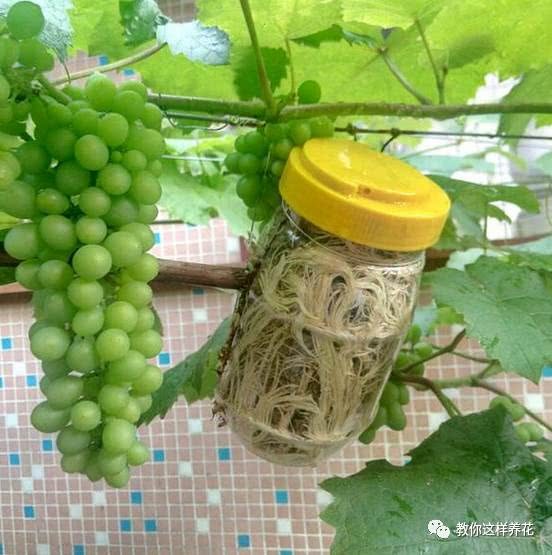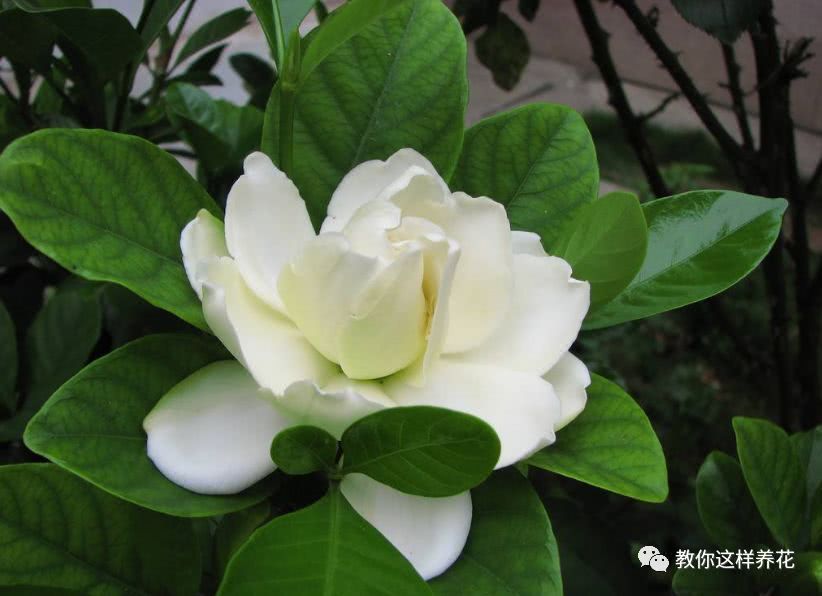Put some water moss in a plastic bag, the grape seedlings are covered with white roots and orchids grow 10 buds in one night.

Orchids are growing vigorously in autumn, but orchids with many flower friends just don't move! There is a little thing at the root of the orchid called Lao Lutou, and many people don't know what it is. In fact, it can be the baby of orchid growers. Put it in a plastic bag and add something to cover it, so you can rub against the bud. In fact, water moss can not only be used to cover the old Reed head, high pressure, flower cultivation are good hands, let's have a look!
"
Water moss raises flowers. "
-Water moss grape high pressure-
High pressure propagation is a very effective method of reproduction, with a survival rate of almost 100%. Generally use nutritious soil as matrix, but also many people use water moss, the effect is very good. The water moss is moistened with water, and it is appropriate to hold the substrate tightly with your hands without dripping.
First, peel the branches in a ring, wrap the wet matrix in the place where they are replaced and peeled, and tie them tightly with fresh-keeping bags or plastic bags. The use of water moss for high-pressure propagation, with light substrate, suitable for high-pressure twigs, but also more suitable for express transportation, at the same time, the rooting speed is relatively fast.
A few weeks later, when the root is full, cut off from 2 to 3 centimeters below the ring.
Propagation of water moss under high pressure in Milan
-the Reed head of the orchid covers the bud-
In autumn, many flower friends change pots, when changing pots, do not lose the old Reed head, cover it with water moss or river sand, and grow new orchids, which is very good.
Peel off the fresh and full old Reed head of the orchid, soak it with potassium permanganate or carbendazim for half an hour and dry it for use.
Wrap the old Reed head with water moss, spray water moss with water, put it in a self-sealed bag, put it in a warm place, and be careful not to get too wet, or it may rot. Every few days, open the bag to breathe, and the old Reed will sprout in about 15 days. After germination, poke several holes in the bag to facilitate the old Reed to breathe.
When the new bud unfolds the leaf mouth and grows the new root, it can be transplanted. Generally, the Reed head can be buried deep into the plant material 1~2cm. In the process of covering, be careful not to look away often, it is easy to hurt the root.
In addition to water moss, shavings and river sand can also be used to cover the roots.
-Water moss Magnolia cuttings-
Water moss has good water retention and is more suitable for cutting rooting of fleshy roots such as Cymbidium.
Take the rotten root of Cymbidium as an example, cut off the rotten root of Cymbidium, soak it with carbendazim for about 20 minutes, and dry it in astigmatism and ventilation.
Wet the dry water moss, wrap the root of the magnolia, and put it in the flowerpot together.
Put it in a cool and ventilated place, feel the water moss dry and spray water, and the gentleman orchid can take root in about a month.
-Phalaenopsis raised by water moss-
Water moss is more water-retaining and breathable. Phalaenopsis likes the moist growth environment, but it needs to be breathable. Water moss is a very good cultivation medium.
First soak the moss with water, pick out the impurities in Phalaenopsis and squeeze out the water. The old Phalaenopsis takes off the basin first, stops the water a few days in advance, removes the original water moss, be careful not to be fast, and operate slowly to reduce root damage. Cut off the rotten root and dry root of Phalaenopsis, put the water moss between the roots, do not fill it too tightly, first put a little water moss on the bottom of the basin, and then put the Phalaenopsis filled with water moss in it. Some gaps can be filled with tweezers, and the water moss can be filled to about 1-2cm from the edge of the basin.
After filling, do not water, maintain in the place of scattered light for a week, and then wait for the water moss to dry, pour through, and then you can maintain normally.
In the process of using water moss, if the water moss turns green, then it can no longer be used, it is almost rotten. Need to be replaced in time, the general water moss can be used for about a year, a year later need to be replaced in time.
Water moss is a good thing for growing flowers.
Do you know all these tips?
Show it to the flower friends who need it.
- Prev

100 kinds of courtyards are crazy. There's always one you like.
The modernist style embodies the beauty of simplicity, and the courtyard of the modern style is most suitable to be built around the modernist style or buildings built at the end of the 20th century. Any building, as long as it is not a typical regular style, can be matched.
- Next

The rotten roots of the money tree and the jade tree are dying. A simple trick explodes again after a month.
In the process of flower and plant maintenance, it is a very normal phenomenon that rotten roots wilt and wilt. These watering methods have a great relationship. Once these problems arise, how to solve them? In fact, many flower friends throw away the plants when they see the leaves wither.
Related
- Wuhan Hospital Iron Tree Blooming Result Was Instantly Frightened by the Gardener Master
- Which variety of camellia is the most fragrant and best? Which one do you like best?
- What is the small blue coat, the breeding methods and matters needing attention of the succulent plant
- Dormancy time and maintenance management of succulent plants during dormancy
- Minas succulent how to raise, Minas succulent plant pictures
- What are the varieties of winter succulent plants
- How to raise succulent plants in twelve rolls? let's take a look at some experience of breeding twelve rolls.
- Attention should be paid to water control for succulent plants during dormant period (winter and summer)
- Watering experience of twelve rolls of succulent plants
- Techniques for fertilizing succulent plants. An article will let you know how to fertilize succulent plants.

